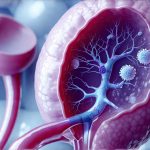The transition into menopause marks a significant life stage for women, typically occurring between ages 45 and 55. However, for a substantial number of individuals, this transition happens earlier—defined as before the age of 40 (early menopause) or even before 45 (premature ovarian insufficiency, often abbreviated POI). This early onset can be due to various factors including genetics, autoimmune diseases, medical treatments like chemotherapy or radiation, and sometimes remains unexplained. While many associate menopause with hot flashes and irregular periods, a less discussed but equally impactful symptom is increased urinary frequency, which can significantly affect quality of life. Understanding the connection between early menopause and changes in urinary habits is crucial for both proactive health management and seeking appropriate support.
The hormonal shifts characteristic of menopause—specifically the decline in estrogen—play a key role in altering the function of the pelvic floor muscles and the lining of the urethra, the tube that carries urine from the bladder. These alterations can lead to urgency (a sudden, compelling need to urinate) and frequency (needing to urinate more often than usual). In early menopause or POI, this hormonal decline is often more abrupt compared to typical menopause, potentially leading to a quicker onset and greater severity of these symptoms. Furthermore, the psychological stress associated with early menopause—dealing with potential fertility concerns, emotional adjustments, and long-term health implications—can exacerbate urinary issues. It’s important to note that experiencing increased urinary frequency doesn’t automatically indicate a problem related to menopause; other medical conditions must be ruled out first. You may also want to explore the link between vaginal and urinary health in women.
The Hormonal Link: Estrogen & the Urinary Tract
Estrogen has profound effects on the entire urogenital system, extending beyond reproductive functions. It maintains the thickness and elasticity of the urethral lining and supports the strength of pelvic floor muscles—the very foundations that control bladder function. As estrogen levels plummet during menopause (and especially rapidly in early menopause), these tissues undergo changes. The urethral lining becomes thinner and less resilient, making it more susceptible to irritation and increasing sensitivity. This heightened sensitivity can trigger a sense of urgency even with small amounts of urine in the bladder.
The pelvic floor muscles, responsible for supporting the bladder, uterus, and rectum, also rely on estrogen for optimal function. Estrogen helps maintain muscle tone and strength. Reduced estrogen contributes to muscle weakness, potentially leading to stress urinary incontinence (leakage during activities like coughing, sneezing, or exercise) and contributing to an overall feeling of urgency and frequency as the bladder isn’t adequately supported. It’s a complex interplay – weakened muscles can struggle to prevent sudden urges, while a sensitive urethra misinterprets normal bladder fullness as an urgent need to void. Understanding early urinary patterns is also helpful.
This decline in estrogen doesn’t just impact physical structures; it also affects nerve function in the pelvic region. Estrogen influences the nerves that control bladder sensation and signaling. A decrease in estrogen can disrupt these signals, leading to inaccurate perception of bladder fullness or increased sensitivity, further contributing to urinary frequency and urgency. Therefore, understanding this hormonal connection is vital for comprehending why many women experience changes in their urinary habits during menopause, and particularly when it happens early. Low libido can also be impacted by these hormonal shifts.
Beyond Hormones: Other Contributing Factors
While the hormonal decline is central to the link between early menopause and urinary frequency, several other factors can significantly contribute to these symptoms. These include lifestyle choices, pre-existing medical conditions, and psychological wellbeing. For instance, excessive caffeine or alcohol consumption acts as diuretics, increasing urine production and exacerbating frequency. Similarly, fluid intake patterns play a role; drinking large amounts of liquid at once can overwhelm bladder capacity, while dehydration can concentrate the urine, leading to irritation.
Pre-existing conditions like diabetes, obesity, and neurological disorders can all impact bladder control and contribute to urinary issues. Diabetes, for example, can cause nerve damage (neuropathy) that affects bladder function. Obesity places extra pressure on the pelvic floor muscles, potentially weakening them over time. Furthermore, a history of childbirth—especially multiple births—can strain the pelvic floor muscles, making women more vulnerable to urinary problems.
Psychological factors are also crucial. Stress, anxiety, and depression can all heighten awareness of bodily sensations, including bladder signals, leading to increased perceived urgency. In early menopause, dealing with fertility concerns, body image changes, and emotional adjustments can create significant stress that impacts urinary function. A holistic approach—addressing not only the hormonal aspects but also lifestyle factors and mental wellbeing—is essential for managing these symptoms effectively.
Managing Urinary Frequency: Lifestyle Modifications
Fortunately, many strategies can help manage increased urinary frequency without immediate medical intervention. These predominantly fall under lifestyle modifications aimed at supporting bladder health and reducing irritation.
- Fluid Management: This involves spreading fluid intake throughout the day instead of consuming large amounts at once. Avoiding excessive caffeine and alcohol is also critical. Aiming for approximately 6-8 glasses of water daily (adjust based on individual needs and activity level) is generally recommended, but this should be tailored to each person’s situation.
- Pelvic Floor Exercises (Kegels): Strengthening the pelvic floor muscles can improve bladder control and reduce urgency. These exercises involve contracting and relaxing the muscles used to stop urine flow. It’s important to perform them correctly – consult a physical therapist specializing in pelvic health for proper guidance.
- Bladder Training: This involves gradually increasing the intervals between urination, helping to retrain the bladder to hold more urine. Start by keeping a diary of urination times and then slowly increase the time between voids.
- Dietary Adjustments: Identifying and avoiding foods that irritate the bladder (e.g., spicy foods, citrus fruits, artificial sweeteners) can reduce urgency and frequency.
These modifications often require consistency and patience but can yield significant improvements in urinary symptoms. It’s important to remember these are not quick fixes but rather long-term strategies for supporting bladder health.
When To Seek Medical Attention
While lifestyle modifications can be effective for mild to moderate urinary frequency, it’s crucial to seek medical attention if symptoms are severe or interfering with daily life. Several warning signs warrant a visit to your healthcare provider:
- Sudden onset of urinary frequency: This could indicate an underlying infection or other medical condition.
- Painful urination (dysuria): This is often a sign of a urinary tract infection (UTI).
- Blood in the urine (hematuria): Always requires prompt evaluation to rule out serious conditions.
- Incontinence (leakage): Especially if it’s impacting your quality of life or causing emotional distress.
A healthcare provider can perform tests to determine the underlying cause of urinary frequency and recommend appropriate treatment options. These may include a urine analysis to check for infection, a pelvic exam to assess bladder support, and urodynamic testing to evaluate bladder function. Treatment options could range from medication (e.g., anticholinergics to reduce bladder spasms) to physical therapy or, in some cases, surgical intervention.
Exploring Treatment Options & Support
Beyond addressing underlying medical conditions, several treatment options are available for managing urinary frequency associated with early menopause. Hormone replacement therapy (HRT), under the guidance of a healthcare professional, can help restore estrogen levels and improve urethral and pelvic floor muscle function. However, HRT isn’t suitable for everyone, so a thorough evaluation of risks and benefits is essential.
- Vaginal Estrogen: Localized estrogen therapy—applied as creams, tablets or rings—can directly address the changes in the urethra without systemic effects.
- Physical Therapy: A pelvic floor physical therapist can provide specialized exercises to strengthen pelvic floor muscles and improve bladder control. They can also offer guidance on proper posture and movement patterns to minimize stress on the bladder.
- Support Groups & Counseling: Dealing with early menopause and its associated symptoms—including urinary changes—can be emotionally challenging. Support groups and counseling can provide a safe space to share experiences, learn coping strategies, and connect with others facing similar challenges.
It’s vital to remember that you are not alone. Seeking help is a sign of strength, and there are resources available to support you through this transition. Open communication with your healthcare provider is key to finding the most appropriate treatment plan for your individual needs.





















